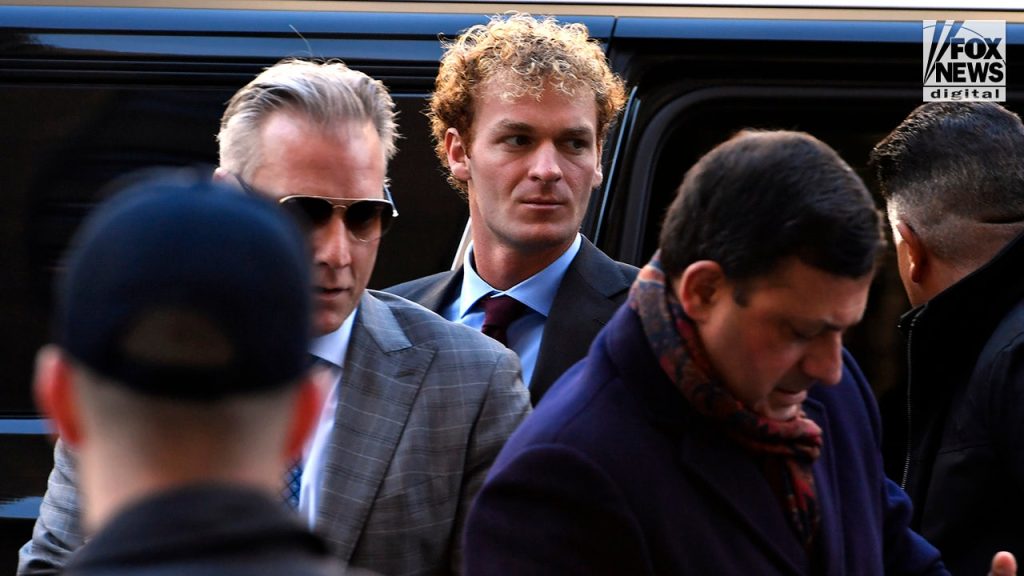The acquittal of Daniel Penny on charges of criminally negligent homicide in the death of Jordan Neely has ignited a firestorm of controversy and conflicting emotions. Penny, a 26-year-old Marine veteran and architecture student, was initially charged with both manslaughter and criminally negligent homicide for restraining Neely, a 30-year-old homeless man with a history of mental illness, in a chokehold on a New York City subway train. The incident, which occurred on May 1, 2023, unfolded against a backdrop of escalating anxieties surrounding public safety on the city’s transit system. The jury’s inability to reach a verdict on the manslaughter charge led the prosecution to controversially dismiss it, leaving only the lesser charge of criminally negligent homicide for the jury to consider. The subsequent not guilty verdict triggered a wave of relief and celebration from Penny’s supporters, juxtaposed against the raw grief and outrage expressed by Neely’s family and advocates.
The events leading up to the fatal encounter paint a picture of a city grappling with the complex challenges of mental illness, homelessness, and public safety. Jordan Neely, diagnosed with schizophrenia and under the influence of K2, a synthetic marijuana, boarded the F train and began exhibiting erratic behavior, including shouting threats and alarming passengers. Witnesses recounted a palpable sense of fear, testifying that Neely’s behavior exceeded the usual disruptive outbursts often encountered on the subway. This atmosphere of heightened anxiety was further fueled by recent incidents of violence on the transit system, including stabbings and assaults, which had contributed to a pervasive sense of unease among commuters. In this context, Penny’s intervention was perceived by some as an act of necessity to protect fellow passengers from a perceived imminent threat.
Daniel Penny’s defense hinged on the argument that his actions were justified given the perceived threat posed by Neely’s behavior. Penny, in a voluntary interview with police after the incident, expressed concerns about the increasing prevalence of violent incidents involving individuals with mental illness on the subway. He cited numerous instances of people being pushed onto subway tracks and emphasized the escalating fear among commuters. The defense emphasized the chaotic nature of the situation and the perceived need for immediate action to prevent harm to others. The jury’s decision to acquit Penny suggests that they accepted this argument, concluding that his actions, while resulting in a tragic outcome, did not rise to the level of criminal negligence.
The prosecution, led by Manhattan District Attorney Alvin Bragg, argued that Penny’s use of excessive force, specifically the prolonged chokehold, directly led to Neely’s death. They presented evidence regarding the proper procedures for restraining individuals and emphasized the potential dangers of applying pressure to the neck. The prosecution also sought to highlight Neely’s vulnerability due to his mental illness and argued that Penny’s actions were disproportionate to the threat posed. Despite securing a grand jury indictment, the prosecution ultimately failed to convince the jury of Penny’s criminal culpability. The dismissal of the manslaughter charge, while legally permissible, added a layer of complexity to the proceedings and sparked criticism from those who believed a compromise verdict might have been possible.
The acquittal of Daniel Penny has reignited a broader debate about the intersection of mental health, homelessness, and public safety. Advocates for the homeless and individuals with mental illness argue that the case highlights the systemic failures to provide adequate support and resources for vulnerable populations. They contend that Neely’s tragic death is a consequence of a society that has failed to prioritize mental health care and address the root causes of homelessness. Conversely, others argue that the case underscores the need for increased security measures on public transportation and a more robust response to individuals exhibiting threatening behavior. The polarized reactions to the verdict underscore the deep divisions within society on these complex issues.
The case of Daniel Penny and Jordan Neely transcends a simple legal dispute; it serves as a microcosm of the challenges facing urban centers across the nation. The incident has ignited a conversation about the responsibilities of individuals to intervene in potentially dangerous situations, the appropriate use of force in self-defense and the defense of others, and the urgent need for comprehensive solutions to address the complex issues of mental illness and homelessness. The verdict, while bringing closure to the legal proceedings, leaves many unanswered questions and underscores the need for a continued dialogue about how to create a safer and more just society for all.

